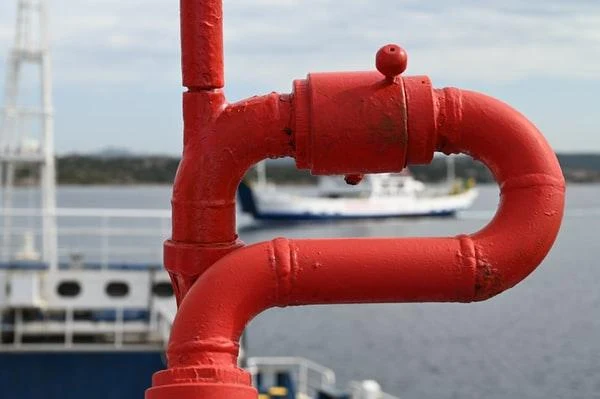Ad Code
Translate
List of 6,000+ Dofollow Commentluv Blogs FREE (Updated 2025)
January 16, 2025
What is Ozempic (semaglutide)? (Updated in 2025)
January 30, 2025
How To Find Suitable Properties In Cyprus? (Updated in 2025)
January 11, 2025
Smart strategies for trading on crypto exchanges
February 18, 2025
Types Of Insulation For Frozen Water Pipes
Zizo Gala-Mkhize
May 08, 2022
Frozen pipes can be a real bummer. They serve as a great reminder to keep up with home maintenance, including regularly cleaning air conditioner filters to remove debris and improve airflow.
Let's search "how to clean AC filter" and come up with a solution, whether it be washable filters or reusable filters. Making sure your air conditioner has a clean AC filter is a good idea because it will reduce allergies, contaminants, efficiency, and indoor air quality. A dirty air filter helps no one, so regular cleaning of your HVAC system is an important step.
If you are one of the many people who have pipes that freeze in the winter, you know that it can be a real pain. There are a few different ways to insulate your pipes so they don't freeze. One way is to wrap them in inflexible insulation. You can buy insulation that is made for this purpose, or you can use bubble wrap or even towels. Another way to insulate your pipes is to use foam board. This is a good option if you have metal pipes because the foam board will help to keep the heat in. You can also use caulking or tape to seal the joints between the pipes and the insulation.
While considering various insulation types for frozen water pipes, it is also essential to explore different insulation materials and methods that can efficiently secure and protect various areas of a property. One such potent insulation method is spray foam insulation, a versatile and powerful option to prevent heat loss and ensure temperature stability. For a detailed insight into this innovative insulation method, you can read Spray Foam Insulation: An Overview from First Defense, which offers a comprehensive guide on the subject. This resourceful guide will equip you with valuable knowledge to make informed decisions concerning insulation needs, ensuring optimal protection against the elements.
Wrapping Flexible Pipes
Many types of insulation can be used on frozen water pipes. The most common type is fiberglass insulation, which can be wrapped around the line. Many types of insulation can be sprayed on, including foam and fiberglass. If the frozen water pipe is in a difficult-to-reach place, insulation can be injected into the pipe through a small hole.
The insulation is usually sold in rolls cut to size before installation. The insulation should be installed around the entire pipe, not just the visible part. The insulation can be installed in various ways, but the most common is to wrap the insulation around the pipe and then secure it with tape.
Sealing the Joints With Caulking or Tape
There are many types of insulation for frozen water pipes. The most common is sealing the joints with caulking or tape. Caulking is a type of sealant used to fill in the gaps between two surfaces. It is a flexible material that can expand and contract with the weather. Tape is a type of adhesive that is used to attach two characters together. It is a robust and durable material that can withstand cold weather.
Both caulking and tape are effective ways to seal the joints in frozen water pipes. Caulking is a less expensive option, but it can be challenging to apply in cold weather. Tape is a more expensive option, but it is easy to use and very durable.
Which type of insulation you choose depends on your personal preference and budget. Both caulking and tape are effective ways to seal the joints in frozen water pipes, so it is up to homeowners to decide which is the best option.
Insulating With a Foam Board
The most common type of insulation is a foam board. Foam board is a type of insulation that is made of polystyrene foam. It is available in different thicknesses, and it can be cut to fit the shape of the pipe. Another type of insulation that can be used is bubble wrap. Bubble wrap is a type of insulation that is made of plastic bubbles. It is available in different thicknesses, and it can be cut to fit the shape of the pipe.
Overall, several types of insulation can be used on frozen water pipes. The most common type is fiberglass insulation, which can be wrapped around the pipe. Foam insulation can also be used, and it is sprayed on the pipe. Another type of insulation is heat tape, which is a thin wire that is wrapped around the pipe. It is electrically heated and helps to keep the pipe warm.
Featured Post
12 Prominent new technologies and trends emerging in 2025
Khabza Mkhize-
April 02, 2025
Soapie Teasers
Sister Sites
Most Popular
List of 6,000+ Dofollow Commentluv Blogs FREE (Updated 2025)
January 16, 2025
Smart strategies for trading on crypto exchanges
February 18, 2025
Popular posts
List of 6,000+ Dofollow Commentluv Blogs FREE (Updated 2025)
January 16, 2025
Smart strategies for trading on crypto exchanges
February 18, 2025
Footer Menu Widget
Created By Blogspot Theme | Distributed By Gooyaabi Templates

.jpg)


0 Comments